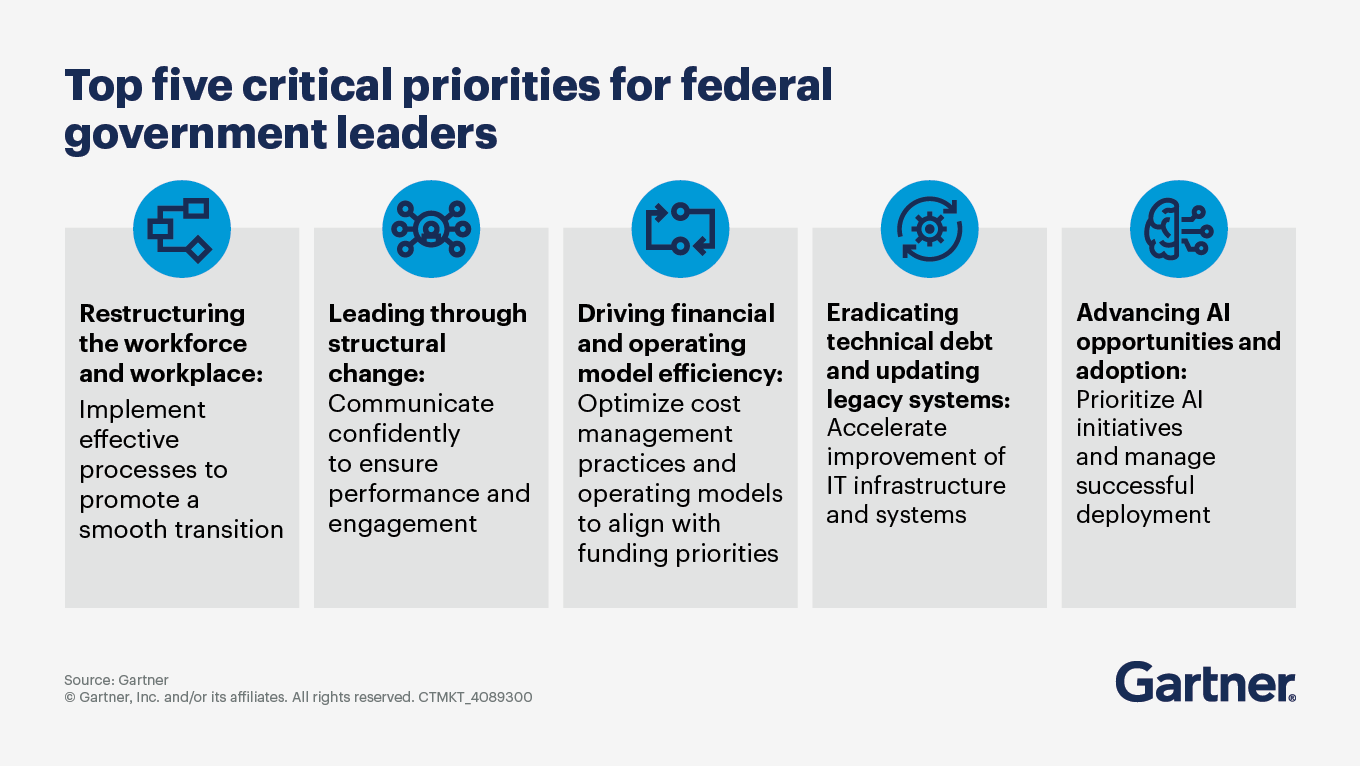- Gartner client? Log in for personalized search results.
Trending Questions on Government Efficiency and Policy Change
Gartner shares quick answers to frequently asked client questions about federal policy shifts and how they impact modernization, service delivery, and operational efficiency across government leadership.
November 2025
Table of Contents
- What is the One Big Beautiful Bill Act and why does it matter to government leaders?
- How can government CIOs and CFOs modernize IT infrastructure using OBBBA tax benefits?
- What should CIOs prioritize to deliver mission objectives amid Medicaid funding cuts?
- How can CFOs balance cost reductions with mission continuity?
- What does OBBBA mean for CHROs and workforce strategy?
- How can government leaders stay ahead of policy changes like OBBBA while continuing to deliver on efficiency and modernization goals?
Attend a Conference
Accelerate growth with Gartner conferences
Gain exclusive insight on the latest trends, receive one-on-one guidance from a Gartner expert, network with a community of your peers and leave ready to tackle your mission-critical priorities.

Drive stronger performance on your mission-critical priorities.
